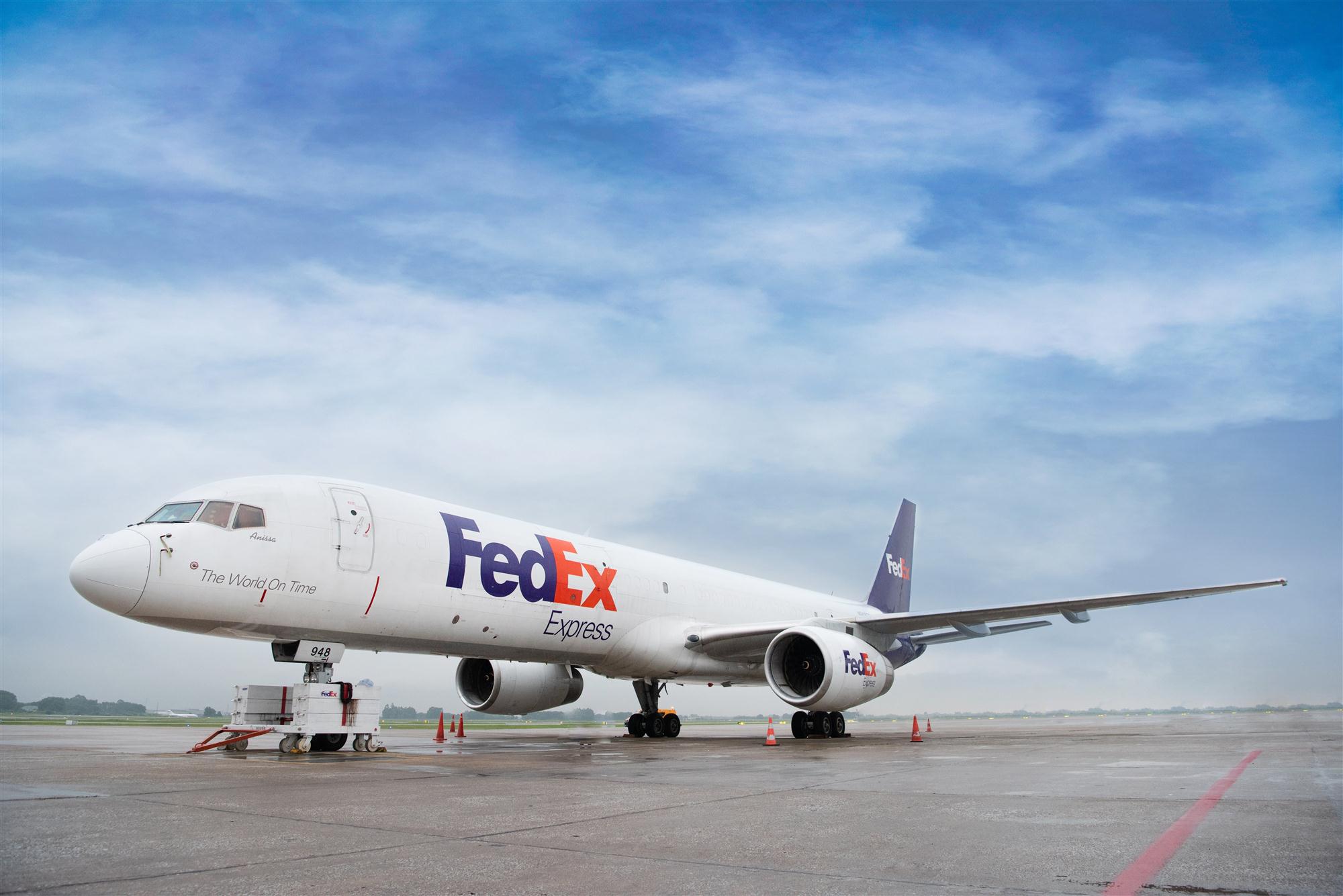FedEx Express’ new freighter flight between its Asia-Pacific hub in Guangzhou and Hanoi is a key part of the company’s growth strategy in the region.
The new flight, which was launched in July and is now operated five times a week with a Boeing 757F, is designed to help customers in Vietnam connect to the world. Backing it up are the results from a recent research study commissioned by FedEx, which showed that 58% of Vietnam’s small and medium-sized enterprises are exporting to markets in the Asia-Pacific region and that 80% were exporting to markets beyond. The top export destinations include China, India, the main European markets and the US.
“First of all, it speaks to the growth and ambition of Vietnam,” says Karen Reddington, president of Asia Pacific at FedEx Express. “Last year Vietnam had a growth of 6.3% and this year they’re expecting to hit 7.1%. There are a lot of SMEs in the market that are looking to export, and not just within Asia Pacific. This is where our new flight fits in. It’s great to talk about growth numbers, but unless there’s infrastructure and capacity to enable that growth, then it’s not going to be realized.”
She says that it is increasingly the case that many small and medium enterprises are actually aiming to sell their products to people around the world first.
“It used to be the case many years ago that people would start a local business and further down the track they would think about going global,” Reddington says. “Now, especially in the world of e-commerce, small businesses do see the world as their opportunity and can reach a bigger marketplace. Around this region, SMEs make up a significant proportion of the economies and account for 20-50% of GDP.”
According to Reddington, the combination of the sales teams of FedEx and TNT as part of the gradual integration of the two companies will help strengthen FedEx strengthen its presence in the country and bring more benefits for customers in the northern region.
“Vietnam is obviously a big manufacturing location but at the same time the great thing about having a freighter is that it allows us to bring in machinery, parts and raw materials too,” she says. “It doesn’t just help exporters but importers too, so it’s a very balanced opportunity.”

In a country such as Vietnam, Reddington says that it’s always difficult to keep the infrastructure moving as fast as the growth, and that it’s critically important that the planning is done to make sure that it keeps up.
“If we think about what that 7% growth means in terms of the infrastructure, both the hard and soft infrastructure absolutely need to keep pace in order to ensure that growth can continue,” she says. “In our business, it’s about whether there are enough runways, slots and facilities to keep cargo flowing. If not, SMEs just won’t be able to export. With soft infrastructure, it’s more about the regulatory environment that enables goods to move freely, and having streamlined customs procedures in place.”
Going into 2019, FedEx Asia Pacific will continue its key focus on SMEs, enabling them to connect to the world without having to worry about anything other than the business they’re in.
“Commerce has become e-commerce and very often businesses are not just one or the other,” says Reddington. “Just in China itself, cross-border e-commerce reached US$100 billion in 2017. We’re really focused in on bringing our expertise to the table on that. We have a group called FedEx Cross Border which assists customers at checkout with their shopping carts, as well as FedEx Web Services which allows businesses to plug in FedEx shipping tools into their webpage.”
On the other side of the spectrum, Reddington is also very optimistic about supporting large companies in the healthcare sector.
“There are two things driving the growth,” she says. “One is the growing middle class. As growth in consumption continues, people have more discretionary spending and buy more goods online, but they also start to spend on healthcare. The other thing is the development of healthcare solutions that now allow things like biologics to move across the globe in a way they never could before. Just in Asia Pacific, healthcare is a US$500 billion market.”
Reddington isn’t too worried about carriers and forwarders encroaching into the business of an integrator such as FedEx, and says she is feeling comfortable with the company’s current position.
“From an infrastructure perspective, FedEx has over 660 aircraft, over 170,000 vehicles around the world, 400,000+ team members and hubs and sortation centres that we’ve invested significant dollars in,” she says. “Just in Asia Pacific, in 2017 we opened our newest hub in Shanghai and we’re already planning for our hub in Incheon. To be able to grow and develop to that scale, and to connect it together seamlessly with our technology – that is difficult to do. On top of that, it’s also about creating solutions for customers.”
Another issue which doesn’t concern Reddington too much is the ongoing tariffs imposed by China and the US on a range of imports from each other.
“You’re always going to get ebbs and flows in global trade,” she says. “The good thing is that we can shift our planes and our capabilities according to where trade flows. It’s really about putting it in perspective. Of all the countries that we serve, of course China and the US are two of the biggest, but round trip on that particular trade lane only represents about 2% of total FedEx revenues.”
She adds that, at the end of the day, supply chains don’t move overnight and customers will still demand products from around the globe, even if there may be some higher charges.
“There’re just tariffs,” says Reddington. “It doesn’t mean that trade won’t continue to flow.”
By Jeffrey Lee
Asia Cargo News | Hong Kong




